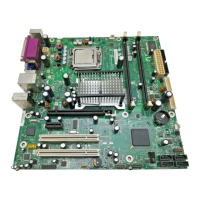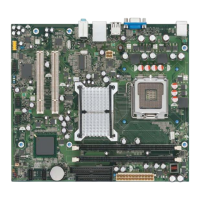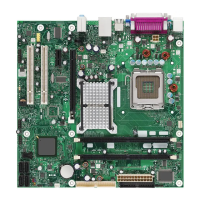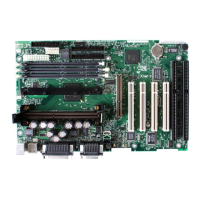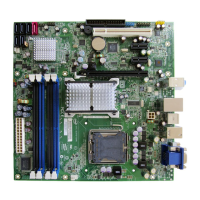Intel Desktop Board D975XBX2 Technical Product Specification
84
3.5 Legacy USB Support
Legacy USB support enables USB devices to be used even when the operating system’s
USB drivers are not yet available. Legacy USB support is used to access the BIOS
Setup program, and to install an operating system that supports USB.
Legacy USB support operates as follows:
1.
When you apply power to the computer, legacy support is disabled.
2.
POST begins.
3.
Legacy USB support is enabled by the BIOS allowing you to use a USB keyboard to
enter and configure the BIOS Setup program and the maintenance menu.
4.
POST completes.
5.
The operating system loads. While the operating system is loading, USB keyboards
and mice are recognized and may be used to configure the operating system.
6.
After the operating system loads the USB drivers, all legacy and non-legacy USB
devices are recognized by the operating system, and Legacy USB support from the
BIOS is no longer used.
To install an operating system that supports USB, follow the operating system’s
installation instructions.
3.6 BIOS Updates
The BIOS can be updated using either of the following utilities, which are available on
the Intel World Wide Web site:
• Intel
®
Express BIOS Update utility, which enables automated updating while in the
Microsoft Windows environment. Using this utility, the BIOS can be updated from a
file on a hard disk, a 1.44 MB diskette, or a CD-ROM, or from the file location on
the Web.
• Intel
®
Flash Memory Update Utility, which requires creation of a boot diskette and
manual rebooting of the system. Using this utility, the BIOS can be updated from
a file on a 1.44 MB diskette or a CD-ROM.
Both utilities verify that the updated BIOS matches the target system to prevent
accidentally installing an incompatible BIOS.
NOTE
Review the instructions distributed with the upgrade utility before attempting a BIOS
update.
For information about Refer to
The Intel World Wide Web site Section 1.2, page 17

